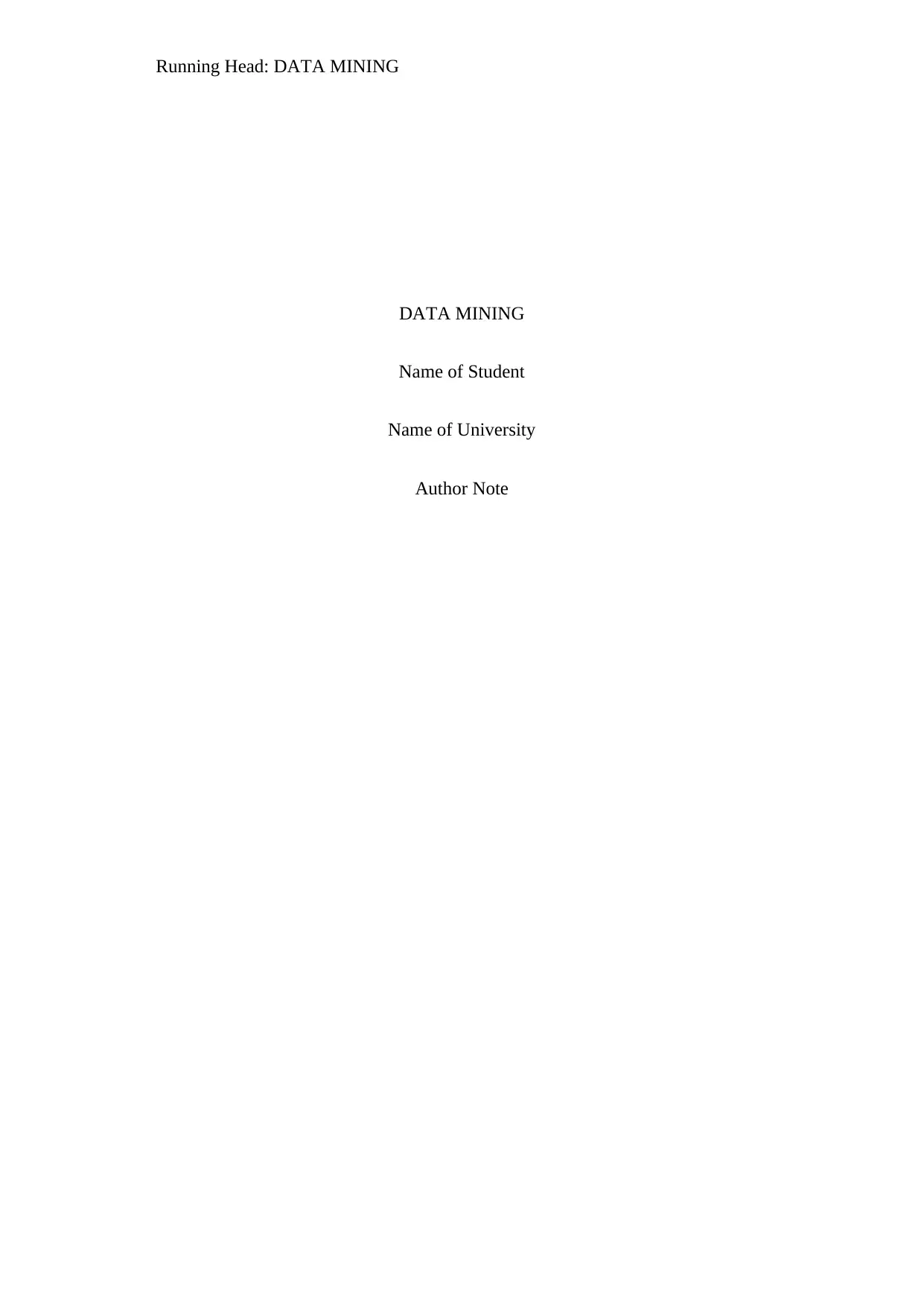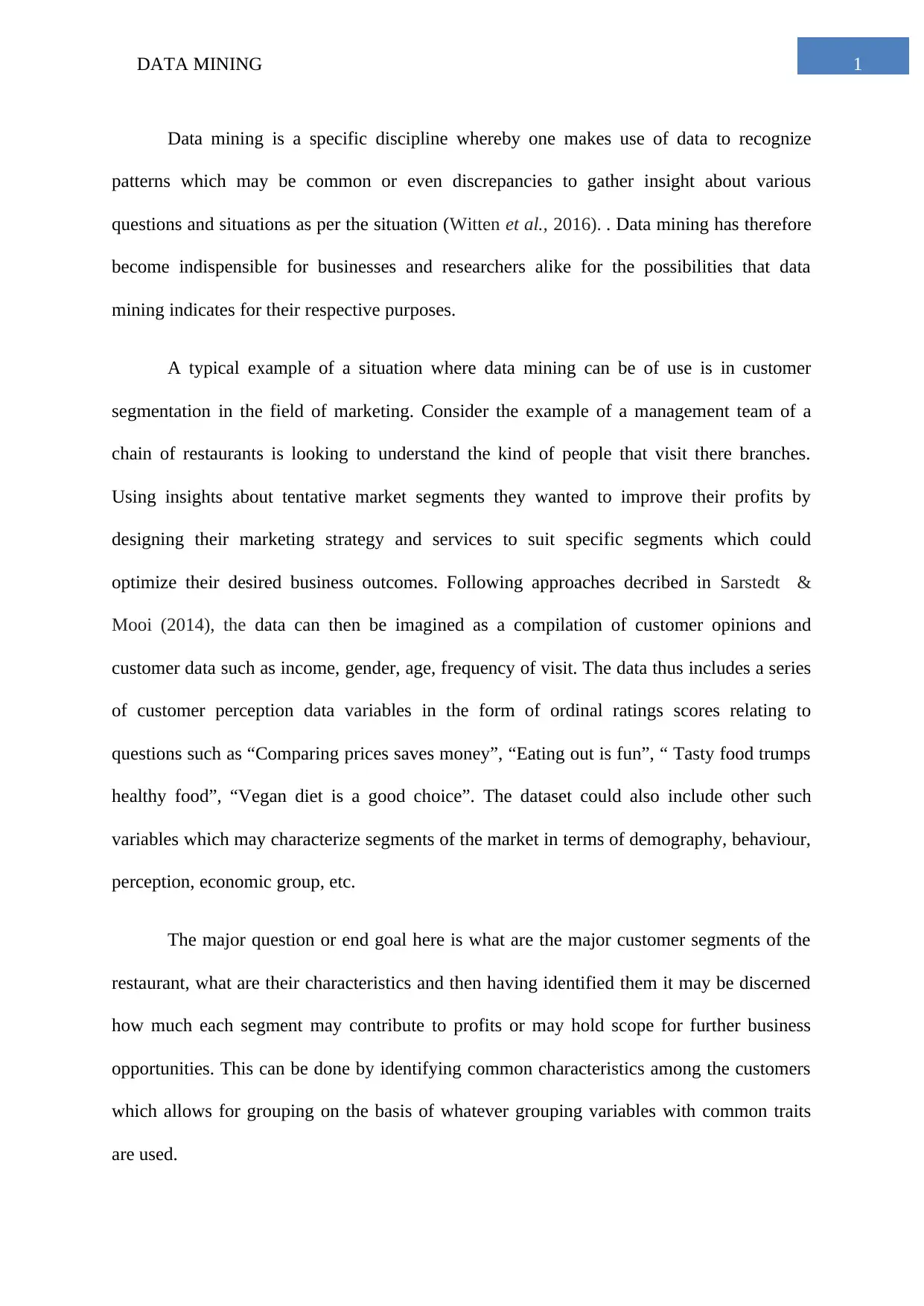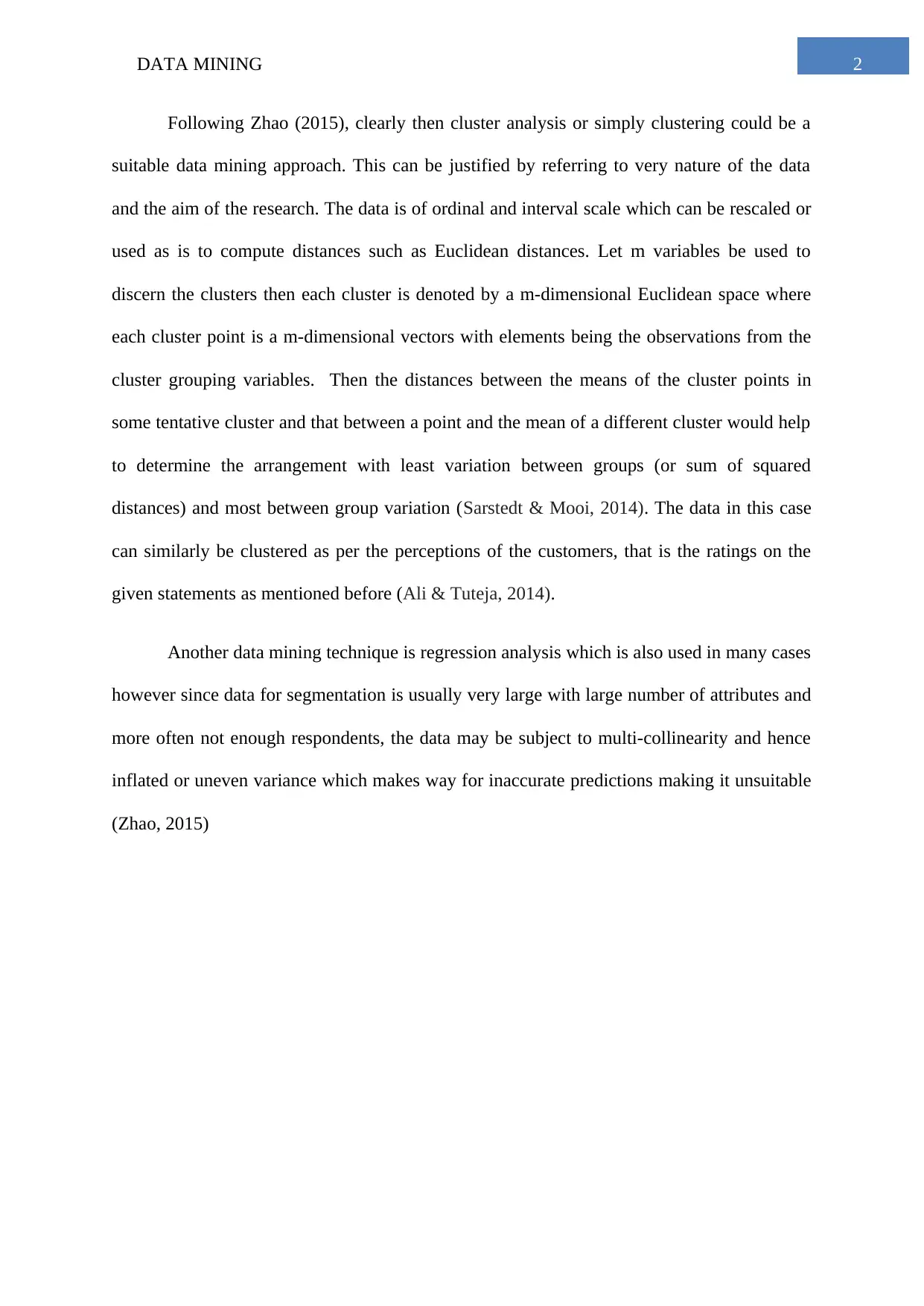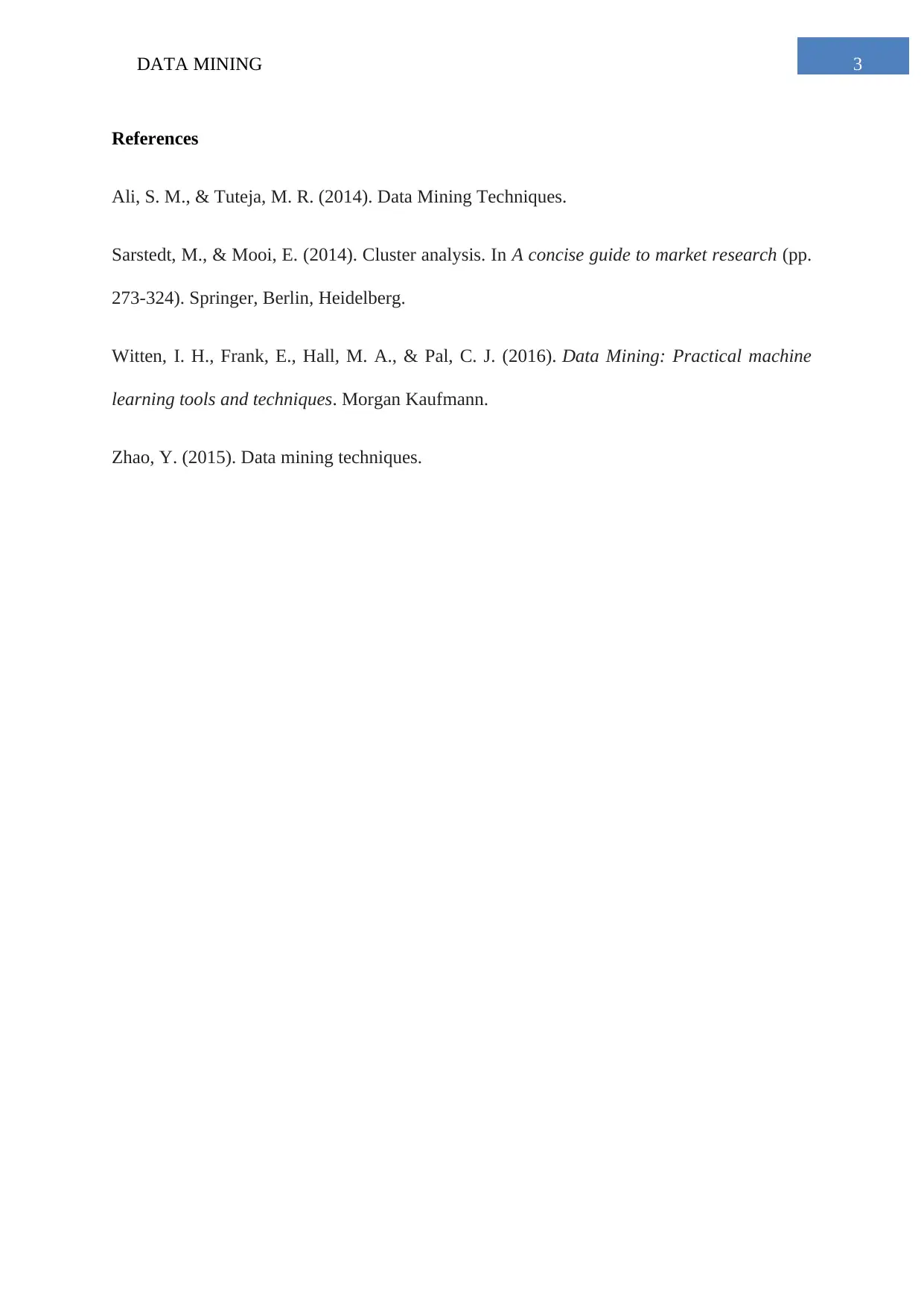Using Data Mining to Understand Restaurant Customer Segments
VerifiedAdded on 2023/06/10
|4
|725
|463
Essay
AI Summary
This essay discusses the application of data mining techniques to understand customer segmentation in the restaurant industry. It highlights a scenario where a restaurant chain aims to improve profitability by tailoring marketing strategies and services to specific customer segments. The essay suggests using cluster analysis to group customers based on their perceptions, demographic data, and behavior. It also explains why regression analysis might not be suitable due to potential multi-collinearity issues in large datasets. The goal is to identify key customer segments, understand their characteristics, and determine their contribution to profits, which can be achieved through data mining approaches. Desklib provides a platform for students to access this essay and other study resources.
1 out of 4





![[object Object]](/_next/static/media/star-bottom.7253800d.svg)